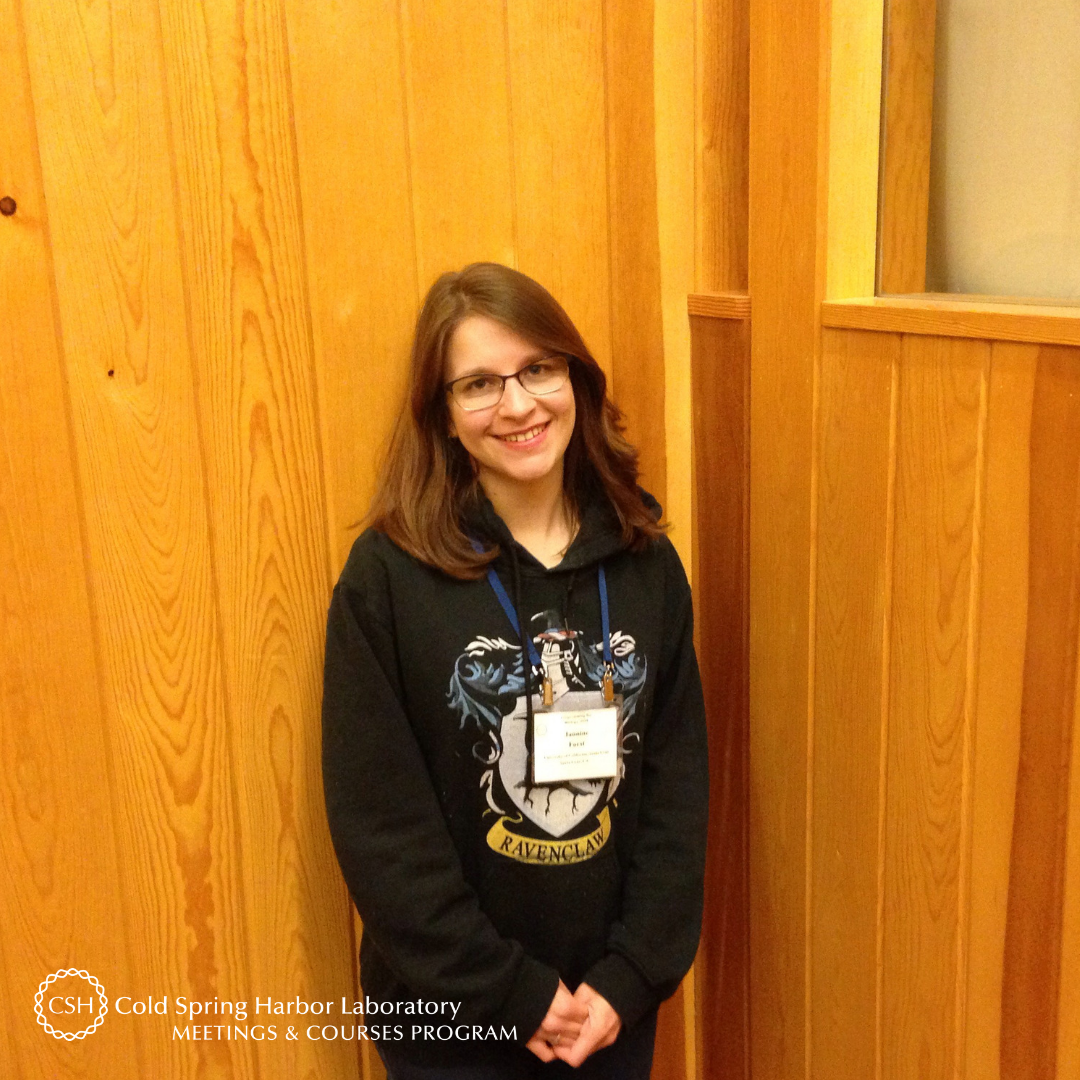Meet Shantanu Shukla of the Genome Sciences and Technology Program, a joint initiative between the University of Tennessee, Knoxville (UTK) and Oak Ridge National Laboratory (ORNL). He is a graduate research assistant working towards his Ph.D. under the supervision of Dr. Dean Myles in the Neutron Diffraction Group at the Spallation Neutron Source (SNS) in ORNL. Shantanu is presently training at our annual course on X-Ray Methods in Structural Biology – his first course at CSHL.
What are your research interests? What are you working on?
I am investigating the selective substrate translocation across bacterial membranes facilitated by primary and secondary transporter proteins.
How did you decide to make this the focus of your research?
In March 2016, I met Dr. Matthew Cuneo, a very talented and dynamic beamline scientist, who first introduced me to the regulation of substrate transport across bacterial inner membrane. I have since been interested in understanding the membrane channels and transporters in bacteria for improving their druggability. Dr. Myles and Dr. Cuneo suggested that I investigate specificity versus affinity profiles of these selective transport systems (especially of their periplasmic binding proteins) which then motivated me to further investigate the role of both structure and dynamics in selective substrate binding and transport across bacterial inner membrane.
How did your scientific journey begin?
Darwin’s theory of evolution based on natural selection has had a profound impact on me and my scientific career. I was in 8th grade when I first read about the adventures of Charles Darwin onboard HMS Beagle and his postulation of the theory of evolution. That same year, as part of my summer science project, I cataloged different species of birds found around the old colonial-era town of Jamalpur in India and couldn’t help but notice how evolution shaped speciation in birds. I then realized that what is postulated as a hypothesis can be tested and confirmed in science. Since that day, both bird watching and science have become personal passions.
Was there something specific about the X-Ray Methods in Structural Biology course that drew you to apply?
As someone with no or limited knowledge of X-ray diffraction, the fact that this training program encourages students in my situation to apply was the strongest reason for my application. Additionally, the focus on lab training is another strong point of this training program that attracted me. Plus, this course brings in the most experienced instructors -- some of who are pioneers of their fields -- to teach crystallography.
What and/or how will you apply what you've learned from the course to your work?
At SNS, we are focused on determining positions of hydrogens in protein structures, which account for around half of the total atoms in a system. Both X-ray and neutron crystallography require growth of high-quality protein crystals, but the crystals required for neutron analysis are much larger (x1000-fold). The first step to solving any neutron structure is to collect X-ray data on the same system and then jointly refine the X-ray data with the neutron diffraction data to get a complete density of individual atoms. X-ray crystallography is, therefore, the stepping stone to neutron crystallography. To this end, I will use the knowledge gained at this course towards crystallization, diffraction data collection, and data refinement of protein structures in my lab.
What is your key takeaway from the course?
My key takeaway from this course is that even in this era of fast computers and robustly automated algorithms, there is still a need to train good crystallographers. Macromolecular structure determination is not a trivial task and a clear understanding of the theoretical background is often a key determinant of the success or failure of any crystallographic project.
How many CSHL courses have you attended?
This is my first CSHL meeting, but I would definitely look forward to attending more: the Cryo-Electron Microscopy course looks very interesting.
If someone curious in attending this course asked you for feedback or advice on it, what would you tell him/her?
I would encourage them to apply for this course – even if they have limited X-ray crystallography experience (as was my case). I would share with them my own experience so that they feel equally motivated to apply for this program. I would also tell them about how the productive interactions I have had with the instructors and fellow course participants has positively changed my approach towards my own research.
What do you like most about your time at CSHL?
It is a privilege for me to attend this course; and it is not just the course itself but also the whole atmosphere -- it is so energizing around here. Also, the sheer beauty of this place is unmistakable and will be difficult to leave at the end of the course.
Shantanu received a scholarship from the National Institute of General Medical Sciences (NIGMS) to cover a portion of his course tuition. On behalf of Shantanu, thank you to the NIGMS for supporting and enabling our young scientists to attend a CSHL course where they expand their skills, knowledge, and network.
Thank you to Shantanu for being this week's featured visitor. To meet other featured scientists - and discover the wide range of science that takes part in a CSHL meeting or course - go here.







